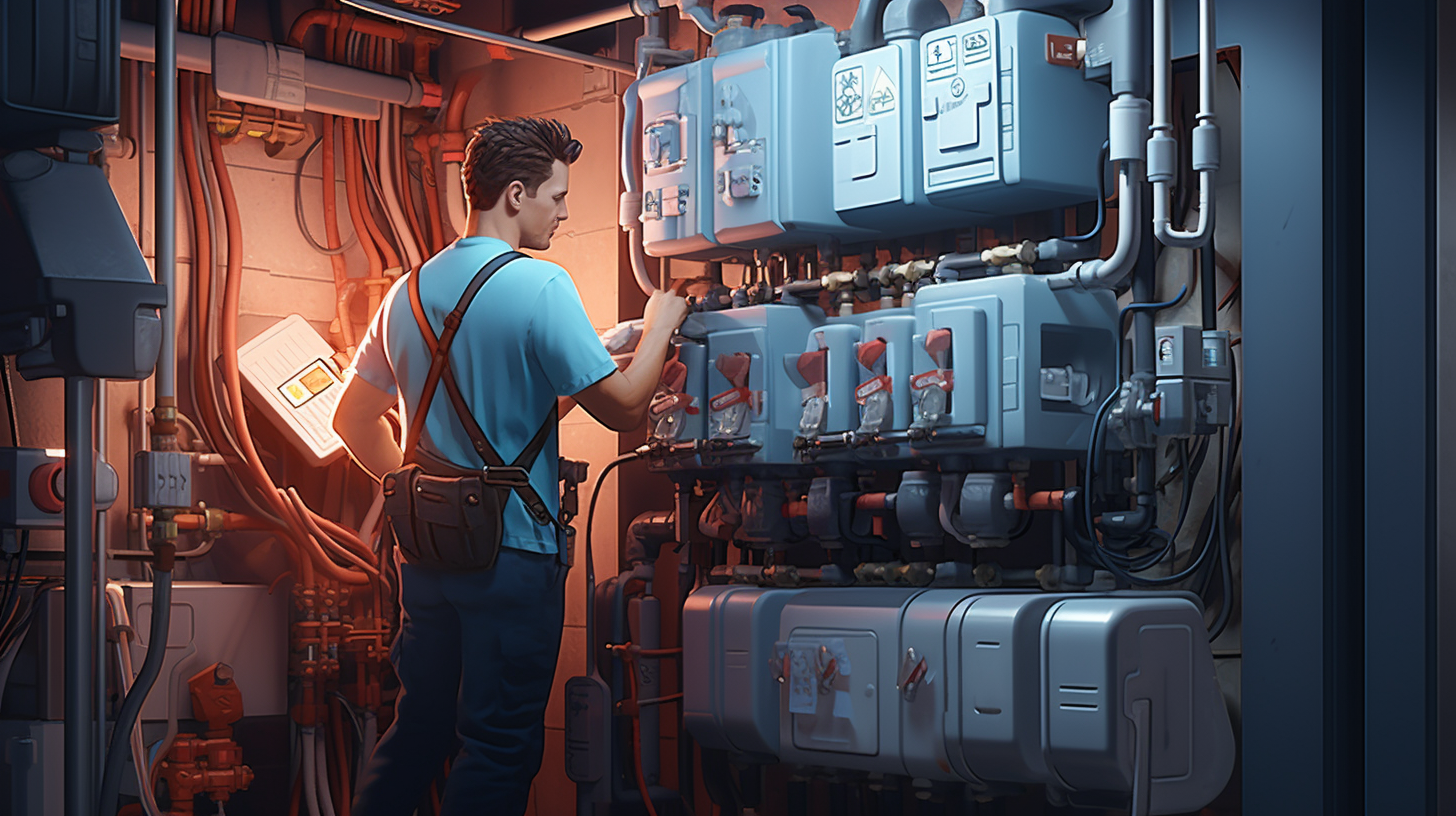In this article, we'll share our top techniques for fixing tankless water heaters.
We've gathered a wealth of knowledge on troubleshooting common issues, cleaning and maintaining the unit, replacing faulty heating elements, fixing water flow problems, and addressing electrical and gas supply issues.
Whether you're a DIY enthusiast or a professional plumber, these tips will help you get your tankless water heater up and running in no time.
Let's dive in!
Troubleshooting Common Issues
When troubleshooting common issues with tankless water heaters, we often start by checking for proper gas supply and ventilation. This is because a lack of gas supply or improper ventilation can cause the heater to malfunction or not work at all.
To ensure proper gas supply, we check the gas valve to make sure it's open and the gas line isn't blocked. We also inspect the ventilation system to ensure it's clear of obstructions and has adequate airflow.
If the gas supply and ventilation are both in good working order, we move on to other potential issues such as water pressure, electrical connections, and sensor malfunctions.
Cleaning and Maintaining the Unit
To properly maintain and clean the unit, we recommend regularly performing routine maintenance tasks to ensure optimal performance and longevity.
One important task is to clean the air intake filter. Over time, dust and debris can accumulate on the filter, reducing airflow and causing the unit to overheat. To clean the filter, simply remove it from the unit and rinse it with water.
Another maintenance task is descaling the heat exchanger. Hard water can cause mineral buildup, which can affect the unit's efficiency. To descale the heat exchanger, use a descaling solution and follow the manufacturer's instructions.
Additionally, it's crucial to inspect the unit for any leaks or loose connections. Regularly checking for leaks and tightening any loose connections can prevent water damage and ensure the unit operates smoothly.
Replacing Faulty Heating Elements
One essential step in fixing tankless water heaters is replacing faulty heating elements.
When the heating elements in a tankless water heater become faulty, the unit may not be able to heat water properly or at all. This can lead to cold showers and other inconveniences.
To replace the heating elements, first, turn off the power supply to the unit. Then, locate the faulty heating element and disconnect it from the electrical wires.
Next, remove the old heating element and replace it with a new one of the same specifications. Finally, reconnect the electrical wires and restore the power supply.
It's important to follow the manufacturer's instructions and safety precautions when handling electrical components.
Fixing Water Flow Problems
Now let's delve into fixing water flow problems with our tankless water heater.
One common issue that can arise is low water pressure. This can be caused by mineral buildup in the pipes or a clogged filter. To address this, start by checking the water inlet filter and cleaning or replacing it if necessary.
Another potential problem is a blocked or restricted water line. Inspect the pipes for any obstructions and remove them if found.
Additionally, inadequate gas supply can also impact water flow. Ensure that the gas valve is fully open and that there are no leaks or interruptions in the gas line.
Addressing Electrical and Gas Supply Issues
When addressing electrical and gas supply issues with tankless water heaters, it's important to ensure that the power source and gas lines are functioning properly. This is crucial for the heater to operate efficiently and provide hot water on demand.
To address electrical issues, it's essential to check if the unit is receiving power by inspecting the circuit breaker or fuse. Additionally, examining the electrical connections and wiring for any signs of damage or loose connections is necessary.
When it comes to gas supply, it's vital to verify that the gas valve is open and that the gas line isn't clogged or leaking.
If there are any concerns or doubts about the electrical or gas supply, it's recommended to seek professional assistance to ensure the safety and functionality of the tankless water heater.
Frequently Asked Questions
How Do I Know if My Tankless Water Heater Is Experiencing a Gas Supply Issue?
To know if our tankless water heater is experiencing a gas supply issue, we can check a few things.
Firstly, we should verify that the gas valve is turned on and supplying gas to the unit.
We can also inspect the gas line for any leaks or blockages.
Another indicator is if there's a lack of hot water or if the heater isn't igniting properly.
If we notice any of these signs, it's best to call a professional for further inspection and repair.
What Are Some Signs That Indicate a Faulty Heating Element in a Tankless Water Heater?
What are some signs that indicate a faulty heating element in a tankless water heater?
Well, there are a few things to look out for.
If you notice a decrease in hot water temperature or inconsistent hot water output, it could be a sign that the heating element isn't functioning properly.
Additionally, if you hear strange noises coming from the water heater or if it takes longer than usual to heat up the water, these could also be indicators of a faulty heating element.
Can I Use Any Type of Cleaning Solution to Clean My Tankless Water Heater?
Sure, we can discuss whether any type of cleaning solution can be used to clean a tankless water heater. It's important to note that not all cleaning solutions are suitable for this purpose.
Using an improper cleaning solution can damage the internal components of the heater. It's recommended to use a manufacturer-approved descaling solution specifically designed for tankless water heaters.
These solutions effectively remove mineral deposits and keep the heater running efficiently without causing any harm.
How Often Should I Clean and Maintain My Tankless Water Heater?
How often should we clean and maintain our tankless water heater?
Regular maintenance is essential to ensure optimal performance and prolong the lifespan of the unit. It's recommended to clean the heater at least once a year to remove any buildup of sediment or mineral deposits.
Additionally, checking for leaks, inspecting the venting system, and flushing the unit regularly are all important steps in maintaining a properly functioning tankless water heater.
What Are Some Common Water Flow Problems That Can Occur in Tankless Water Heaters?
Some common water flow problems can occur in tankless water heaters. It's important to be aware of these issues to effectively fix them.
For instance, a clogged filter or scale buildup can restrict water flow, resulting in reduced hot water output.
Additionally, a malfunctioning flow sensor or pressure valve can also cause water flow problems.
Regular maintenance and cleaning can help prevent these issues and ensure optimal performance of your tankless water heater.
Conclusion
Overall, understanding the common issues and employing the top techniques for fixing tankless water heaters can save you time, money, and frustration.
By troubleshooting, cleaning, maintaining, replacing faulty elements, and addressing water flow, electrical, and gas supply problems, you can ensure that your tankless water heater operates efficiently and reliably.
Don't hesitate to utilize these techniques to keep your hot water flowing smoothly.



